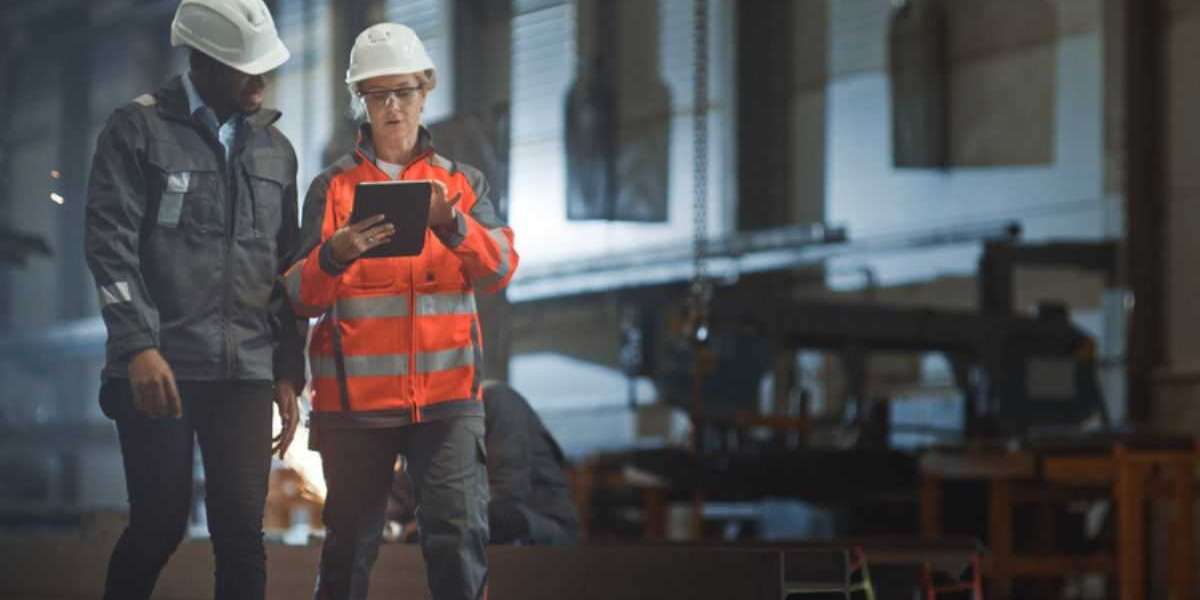In the UAE, industrial safety wear is a critical component for ensuring the safety and well-being of workers across various industries. From construction and manufacturing to oil and gas, industrial safety wear plays a pivotal role in protecting employees from workplace hazards. This guide delves into the importance of industrial safety wear, the types available, and answers frequently asked questions to help businesses and workers make informed decisions.
Importance of Industrial Safety Wear
Workplace safety is paramount, especially in high-risk environments. Industrial safety wear is designed to protect workers from potential injuries caused by falls, cuts, burns, chemical exposure, and other hazards. Ensuring that employees are equipped with the right safety gear not only complies with legal requirements but also promotes a culture of safety, reduces accident rates, and boosts productivity.
Key Benefits of Industrial Safety Wear:
- Injury Prevention:
Proper safety wear reduces the risk of injuries, ensuring that workers can perform their tasks safely and efficiently.
- Compliance with Regulations:
Adhering to safety standards and regulations helps businesses avoid legal penalties and enhances their reputation.
- Improved Productivity:
Safe workers are more confident and productive, contributing to the overall success of the business.
- Cost Savings:
Preventing accidents reduces medical expenses, compensation claims, and downtime caused by injuries.
Types of Industrial Safety Wear
The range of industrial safety wear is extensive, catering to various industries and specific job roles. Here are some of the essential types:
- Helmets and Hard Hats:
Protect the head from impact, falling objects, and electrical hazards. Essential in construction, mining, and heavy manufacturing industries.
- Protective Eyewear:
Includes safety glasses and goggles designed to shield the eyes from dust, debris, chemicals, and radiation.
- Hearing Protection:
Earplugs and earmuffs protect against excessive noise levels, preventing hearing loss in environments such as factories and airports.
- Respiratory Protection:
Masks and respirators filter harmful particles, fumes, and gases, essential in chemical processing, painting, and welding.
- High-Visibility Clothing:
Reflective vests and jackets enhance visibility in low-light conditions, crucial for road construction and night-shift workers.
- Protective Gloves:
Provide hand protection from cuts, abrasions, chemicals, and extreme temperatures. Available in various materials like latex, nitrile, and leather.
- Safety Footwear:
Boots and shoes with reinforced toes, slip-resistant soles, and puncture-proof materials protect feet from heavy objects, sharp items, and slippery surfaces.
- Flame-Resistant Clothing:
Protects against fire and heat, essential for workers in welding, foundries, and oil and gas industries.
- Full Body Harnesses:
Used for fall protection in industries like construction, roofing, and window cleaning, ensuring workers' safety at heights.
- Chemical Protective Clothing:
Includes suits, aprons, and sleeves that shield workers from hazardous chemicals and corrosive substances.
FAQs about Industrial Safety Wear in the UAE
Why is industrial safety wear crucial in the UAE?
Industrial safety wear is crucial in the UAE due to the diverse and high-risk industries operating in the region, including construction, oil and gas, and manufacturing. The harsh climatic conditions also necessitate protective gear to safeguard workers from extreme heat and sun exposure.
How do I choose the right safety wear for my industry?
Choosing the right safety wear involves assessing the specific hazards associated with your industry. Conduct a risk assessment to identify potential dangers and consult safety standards and regulations. Engage with suppliers who can provide guidance on the most suitable products for your needs.
What are the regulations regarding industrial safety wear in the UAE?
The UAE has stringent regulations governing workplace safety, including requirements for industrial safety wear. These regulations are enforced by the Ministry of Human Resources and Emiratisation (MOHRE) and other regulatory bodies. Compliance with these regulations is mandatory to avoid legal consequences and ensure worker safety.
How often should safety wear be replaced?
The lifespan of safety wear varies depending on the type of gear and the conditions in which it is used. Regular inspections should be conducted to check for wear and tear. Replace safety gear immediately if it shows signs of damage or no longer meets safety standards. Some items, like hard hats, have specific replacement timelines, typically every 2-5 years.
Can industrial safety wear be customized for specific needs?
Yes, industrial safety wear can be customized to meet specific requirements. This includes alterations for better fit, additional features for enhanced protection, and branding with company logos. Customization ensures that the safety gear is both functional and comfortable for the workers.
What should I look for in a supplier of industrial safety wear?
When selecting a supplier, consider the following factors:
- Quality: Ensure the products meet recognized safety standards.
- Range: A wide selection of products to meet various safety needs.
- Reputation: Positive reviews and a solid track record in the industry.
- Customer Support: Availability of guidance and after-sales service.
- Cost: competitive pricing without compromising on quality.
How can businesses promote the use of safety wear among workers?
Businesses can promote the use of safety wear by:
- Training: Providing regular training on the importance and correct use of safety gear.
- Enforcement: Implementing strict policies and regular inspections to ensure compliance.
- Incentives: Offering rewards or recognition for consistent use of safety gear.
- Accessibility: Ensuring safety gear is readily available and in good condition.
Are there specific safety wear requirements for different seasons in the UAE?
Yes, due to the extreme weather conditions in the UAE, seasonal considerations are essential. In the summer, lightweight, breathable materials are crucial to prevent heat stress, while in cooler months, appropriate thermal wear should be provided. High-visibility clothing with reflective strips is also important during shorter daylight hours.
How do I ensure the proper fit of industrial safety wear?
Proper fit is essential for the effectiveness of safety gear. Conduct fitting sessions to ensure all workers have the correct sizes. Adjustable features such as straps, belts, and closures can help achieve a better fit. Regular feedback from workers can also help in making necessary adjustments.
What is the role of technology in industrial safety wear?
Technology is playing an increasingly important role in industrial safety wear. Innovations such as smart helmets with built-in communication systems, wearable sensors that monitor vital signs, and advanced materials that provide better protection and comfort are transforming the safety gear industry. Keeping up with technological advancements can enhance workplace safety significantly.
Conclusion
Industrial safety wear is an indispensable part of workplace safety in the UAE. It not only protects workers from various hazards but also ensures compliance with regulations, enhances productivity, and promotes a culture of safety. By understanding the different types of safety wear available, their benefits, and how to choose the right gear, businesses can create a safer and more efficient working environment. Regularly updating safety practices and staying informed about new developments in safety gear will further ensure the well-being of employees in high-risk industries.








